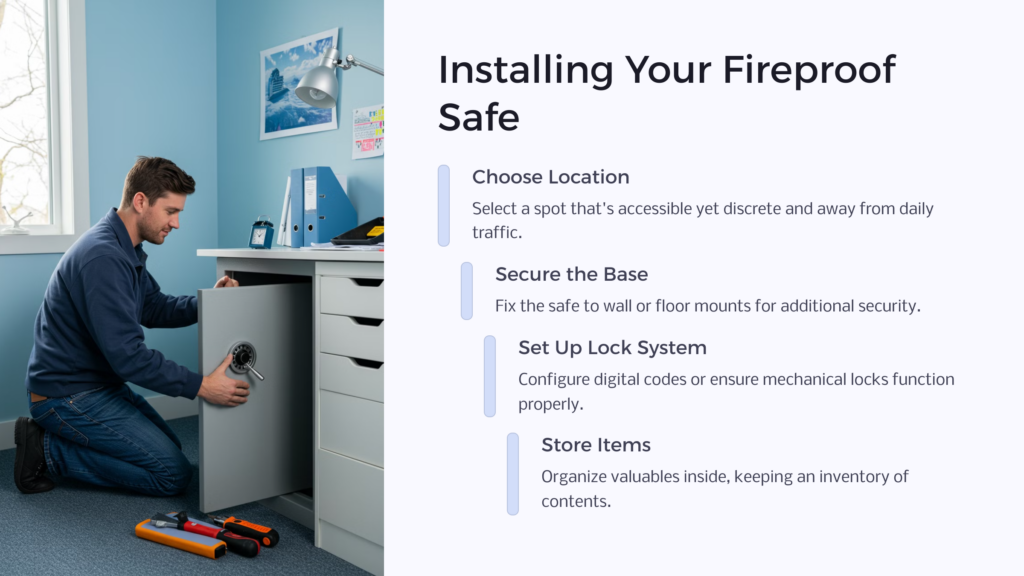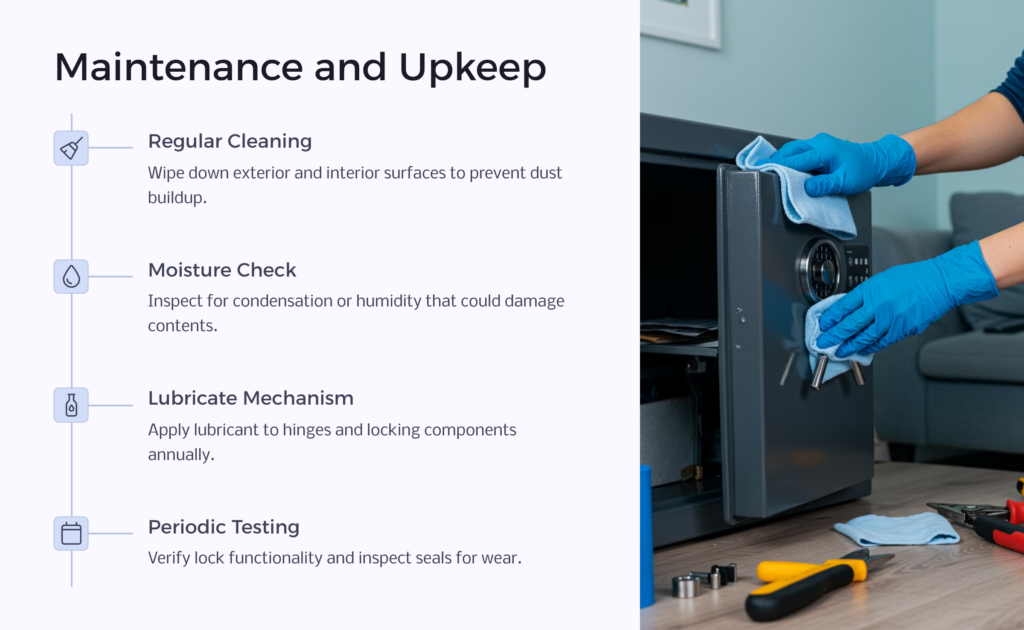Fireproof Safe for Home: Complete Guide for Homeowners
In the twenty-first century, the surge in digital advancements and accessibility of physical assets has underlined the importance of securing valuable goods and significant documents. On this note, owning a fireproof safe in a home environment is no longer an extravagance but a necessity. Not only does it provide a safe haven for irreplaceable items, but it also offers a layer of protection against unsolicited access, robberies, and particularly, fires.
Essentially, a fireproof safe operates as an insulating time capsule, hindering the destructive impacts of heat, smoke, and water — common associates of a fire breakout. It hosts your valuables, from birth certificates, passports, crucial documents, hard disks, to precious jewelry and inheritance artifacts, shielding them from an unanticipated catastrophe. Besides, it supplements your home’s overall security by deterring theft and unauthorized access.
What Makes a Safe Fireproof?

In the realm of home safes, ‘fireproof’ implies a safe’s ability to withstand high temperatures while maintaining an interior climate secure enough to prevent damage to the contents.
There are a variety of materials and technologies employed to attest the fireproof effectiveness of the safes. They are usually encased in a layer of fire-resistant composite materials, typically gypsum or vermiculite, that ensure insulation. When heated, these materials discharge water vapor, thereby controlling the internal temperature and hampering the transmission of heat.
However, not all safes uphold the same level of fire protection. They are subjected to rigorous testing procedures, like the UL and ETL fire-resistance tests, assessing their endurance against extreme temperatures and potential falls during a fire. Depending on the result, they are then graded with a fire rating, dictating their capacity to resist fire for a specified duration.
Different Types of Fireproof Safes
Fireproof safes exist in diverse forms encompassing document safes, gun safes, data safes, each striving to safeguard different types of valuables. Document safes primarily store paperwork and can withstand about 350 degrees Fahrenheit. Conversely, data safes cater to digital media like disks, USBs, DVDs, and maintain an interior temperature below 125 degrees Fahrenheit. Gun safes, designed specifically for firearm storage, are also built to be fireproof.
Determining the paramount type of fireproof safe depends substantially on what an individual needs to protect. Some safes are designed for specific items, providing customized compartments for jewelry, cash, and firearms, thus granting a user-centric experience while fortifying utmost safety.
How to Choose the Right Fireproof Safe for Your Home?

Opting for the apt fireproof safe starts by recognizing what must be preserved. Potential contents like documents, jewelry, cash, firearms, and digital media can drastically influence the type of fireproof safe required.
A safe’s fire rating indicates its potency against the combustion. Depending upon your preference, a higher fire rating offers greater resistance and vice versa.
The size and weight of a fire resistant safe, along with the lock type, are vital factors. A bulky, hefty safe can discourage theft, while a substantial size ensures adequate storage. On the contrary, a digital lock guarantees an effortless, yet secure access compared to a traditional dial.
Budget, ultimately, governs your choice. Fire resistant safes are an investment in safety, and sometimes, paying a bit extra for high-grade protection could prove beneficial in the long run.
Top 5 Fireproof Safes in the Market
The plethora of fire resistant safes available in the market can often bewilder one. Top contenders like ‘Mesa Safes’, offering durable build quality and high fire rating, ‘SentrySafe’, known for its water-resistant and fireproof safes along with a digital keypad, ‘Amazon Basics’, delivering affordable safety options, ‘Honeywell’, recognized for its traditional lock system and heft, and ‘First Alert’, boasting about its expansive interior storage, are some of the many options for potential buyers.
While choosing, it is crucial to consider each model’s unique features and assess them against your needs. The advantages and disadvantages of each should be contemplated carefully before a conclusive decision.
How to Properly Install a Fireproof Safe

The location of a fireproof safe plays a crucial role in maximizing its benefits. Ideal spots include places that are easily accessible, yet discrete and unaffected by daily movements.
Setting up a fireproof safe encompasses the safe’s placement, fixing the base if wall-mountable or floor-mountable, securing the lock system, and finally, storing the items. If possible, hiring a professional for the installation can safeguard against potential errors.
Maintenance and Upkeep of Fireproof Safes

Regular maintenance is necessary to guarantee a fireproof safe’s long-term performance. It ensures that the safe continues to provide optimal protection against fire damage and unauthorized access.
Basic care practices include cleaning your home safe routinely, checking the interior for moisture build-up, lubricating the locking mechanism, and occasionally testing the safe’s fire resistance. These practices can help keep your fireproof safe in prime condition.
Conclusion
Fireproof safes cater to the substantive need for protecting valuable possessions against unpredictable hazards. The choice of a fireproof safe entails understanding what needs fire protection, like documents, jewels, money, firearms, media, assessing the fire rating, considering the size, weight, and locking mechanism, and finally, respecting the budget.
Investing in a fireproof safe is a responsible move towards fortifying the security of one’s possessions. It stands as an unrivaled shield, protecting your irreplaceable belongings from unforeseen incidents, simultaneously offering serenity that your jewels are safe beyond any shadow of doubt.
